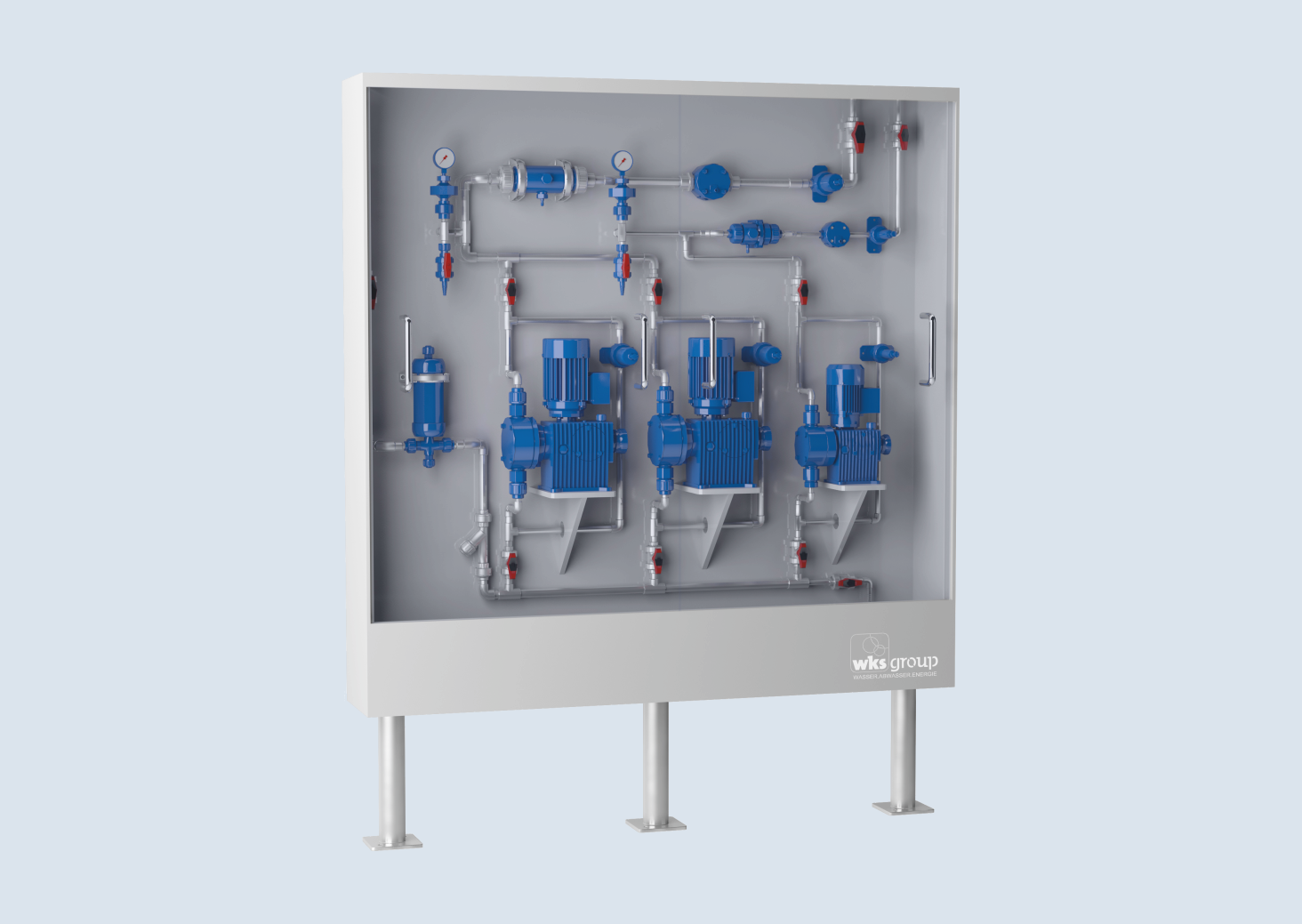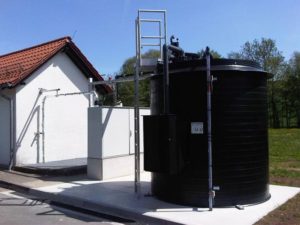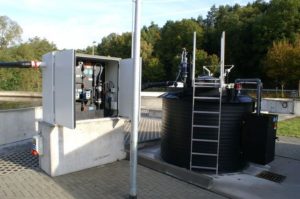Erreichung geforderter Reinigungsziele bei minimalem Verbrauch durch intelligente Verknüpfung von Mechanik und Automatisierung
Einsatzgebiete | Anwendung
- Kommunale und industrielle Abwasserbehandlung
- Wasseraufbereitung
- Schlammbehandlung
- Minimierung der Phosphat-Ablaufwerte
- Verbesserung der Schlammabsetz- und Schlammentwässerungseigenschaften
- Neutralisation
- pH-Einstellung
- Optimierung und Ausgleich des Nährstoffhaushaltes
- Vorbehandlung durch Entlastungsflockung in der Vorklärung
- Wasseraufbereitung
Produktbeschreibung
Die Dosierung ist ein Komplettsystem aus Lagertank und Dosierstation mit Steuerung für die Dosierung von Chemikalien. Die Dosierstation sowie die Schalt- und Steueranlage sind im Schutzschrank untergebracht. Die Materialien sind für die jeweils eingesetzten Chemikalien geeignet. Der nach jeder Dosierpumpe angeordnete Druckpulsationsdämpfer sorgt für den Abbau von Druckspitzen und eine pulsationsarme Strömung. Die je Pumpe erforderlichen Überströmventile schützen die Pumpen, die theoretisch einen unendlich hohen Druck aufbauen könnten. Druckhalteventile sichern einen konstanten Druck im Dosiersystem. Zur Mengenmessung des Dosiermediums kann wahlweise ein MID oder ein Ovalradzähler eingesetzt werden. Das Regelsystem für die Fördermenge wird über eine Messeinrichtung im Becken angesteuert und sichert, entsprechend des Abwasserzustandes, eine optimale Zuführung des Dosiermediums. Die Voraussetzungen für die Einbindung in ein Prozessleitsystem sind gegeben.
Eingesetzte Chemikalien:
- Saure Dosierchemikalien wie: Eisenchlorid, Eisenchloridsulfat, Aluminiumsulfat, PAC, Grünsalz, Ammoniumsulfat, Phosphorsäure, Salzsäure etc.
- Alkalische Dosierchemikalien wie: Natriumaluminat, Natriumhydroxid, Kalkmilch, Magnesiumhydroxid, Natriumhypochlorit
- Harnstoff
- Anionische und kationische Polymere
- Entschäumer
- Organische Säuren: Ameisensäure, Zitronensäure, Essigsäure
- Methanol, Ethanol und weitere Kohlenstoffquellen
- Oxydationsmittel: Kaliumpermanganat
Konstruktionsmerkmale
- Lagertank und Dosierstation für Außen- und Innenaufstellung
- Außenaufstellung:
- Lagertank mit und ohne Isolierung und Beheizung
- Dosierstation sowie Schalt- und Steueranlage im Wetterschutzschrank
- Innenaufstellung:
- Lagertank mit und ohne Abluftbehandlung
- Zu- und Abluftführung nach außen
- Dosierstation mit Spritzschutz
- Heberanlagen für Tanks
- Dosierstation mit Dosierplatte sowie Schalt- und Steuerschrank als vormontierte Einheit
- Kompaktdosierstation im Sicherheitsmodulcontainer mit IBC als Chemikalienlager
- Regelsysteme für Fördermenge
- Verknüpfung mit Prozessleitsystem möglich
Vorteile
- Optimale Kombination aus mechanischen, elektrischen und automatisierungstechnischen Komponenten
- Regelsystem für wirtschaftlichen Chemikalienverbrauch
- Baukastensystem sichert optimale Stationsgröße und damit verminderte Investitions- und Betriebskosten
- Einbindung in eventuell schon vorhandene Prozessleitsysteme möglich
- Einfache Bedienung
- Störfallmanagement
- Nachrüstung problemlos möglich



